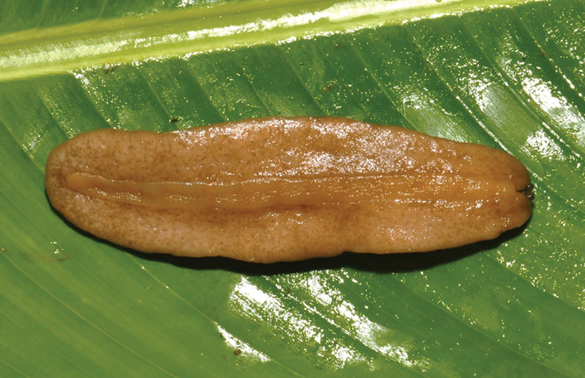Thai Researchers Uncover Two New Species of Land Slugs.
Others are reading now
On September 23, the Facebook page of the Animal Systematics Research Unit at Chulalongkorn University announced a groundbreaking discovery: two new species of land slugs found in Thailand.
Land slugs, known locally by various names such as “banana-dried-like slug” or simply “land slug,” are gastropods that have completely lost their shells through evolution.
These creatures are called different names across Thailand’s regions, such as “dog’s tongue” in the Northeast, “sky feces” in the North, “sky slug” in the South, and “dried banana slug” or “ground slug” in Central Thailand. They typically inhabit areas with decaying leaves, under logs, or in places with ground cover, both in natural habitats and human-disturbed areas.
The research team, led by Ph.D. student Bawornlak Mitchueachart under the supervision of Prof. Dr. Somsak Panha from the Animal Systematics Research Unit, Department of Biology, Faculty of Science, Chulalongkorn University, conducted a comprehensive study of the Valiguna genus of land slugs in Thailand.
Also read
Previously, only three species were reported, with Valiguna siamensis (Martens, 1867), or the Siamese land slug, being widely distributed across Thailand, Myanmar, and Laos.
Due to the striking similarities in the external appearance of these land slugs, researchers had to rely on internal organ analysis and evolutionary tree diagrams based on DNA data to distinguish between species. This meticulous approach led to the discovery of two new species:
-
Valiguna semicerina Mitchueachart & Panha, 2024: The Smooth-backed Land Slug, found in eastern Thailand and also in Cambodia and Myanmar.
-
Valiguna crispa Mitchueachart & Panha, 2024: The Khamin Cave Land Slug, exclusively found in Khamin Cave, Surat Thani Province.
This research has significantly contributed to the knowledge of land slugs in the Veronicellidae family. It highlights the need for further studies on the morphological and genetic diversity of land slugs in Southeast Asia. Such comprehensive species listings will be crucial for future conservation efforts and biodiversity resource management in the region.








